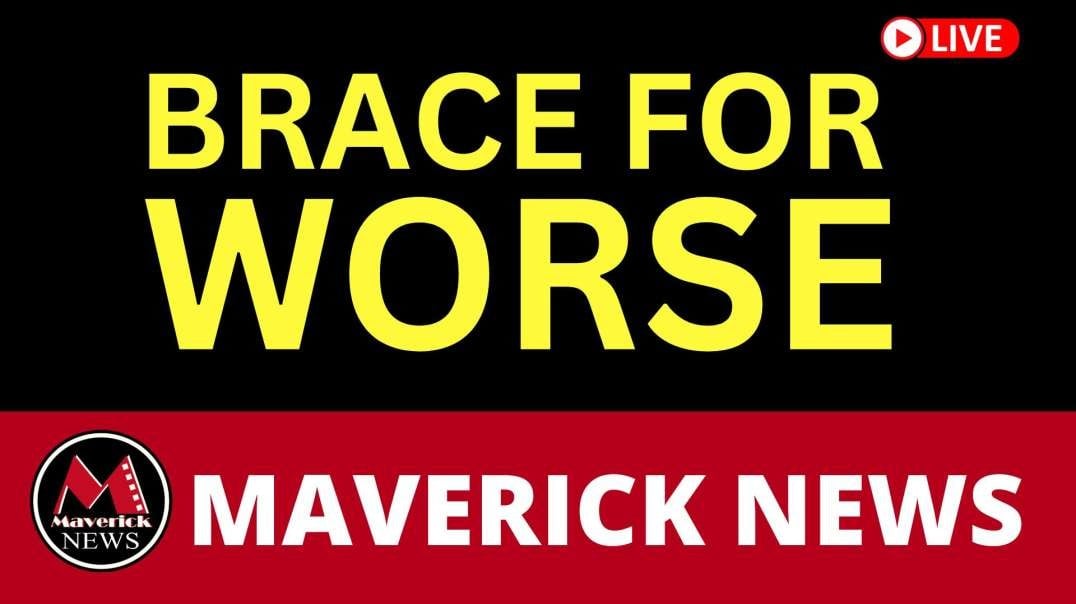Does Anyone Even Care That The U.S. Government Debt Will Soon Cross The 30 Trillion Dollar Mark.mp4
PREPARE NOW m'friends! We will see something we\ve never seen before! 1935 will be a comedy show compared to whatr we will see in the "very near future!" Fear porn??? I think "NOT!" Reality...? Yesssssssssssss! Get prepared!
"Epic Economist"
America is now officially on the path of financial ruin. We are nearing $28 trillion in national debt, and by the end of 2021, we will likely have exceeded the $30 trillion mark. Congress is about to finally pass a 1.9 trillion dollar stimulus package. In the short-term, that will help to ease the pain of millions of American households, and also provide assistance to some businesses across the country. However, a significant part of that spending isn't tied to priorities that are directly related to the current crisis, and considering we will have to borrow every single dollar spent in this bill - on top of all of the "standard" borrowing that we are already doing - it seems that we're doomed to fall into a tragic debt spiral - one that it will take decades to recover from. In other words, with almost $30 trillion in national debt, there's no question we are headed to The Next Great Depression. That's what we're going to expose in this video.
We're right on the verge of a major financial disaster, but as numerous devastating events are unfolding at the same time all around us, many can't afford to take a break and try to look at the bigger picture. Can we even blame them? For a year now, most Americans have been in a living nightmare. People's lives are still being turned upside down and dramatically falling apart. But, of course, the mainstream media is still doing a great job in distracting us from the real roots of our real problems. In that way, it has been quite easy to shift our focus away from national budget issues in a time millions are wondering if they will have enough to eat. However, this is a matter of importance to all of us, because, in the long-run, there will be serious consequences that could collectively impact our living standards. So we're about to report some concerning numbers that are failing to be delivered by mass media outlets.
Let's start with GDP. According to the Bureau of Economic Analysis, current-dollar GDP declined 2.3 percent, or $500.6 billion, in 2020 to a level of $20.93 trillion, compared with an increase of 4.0 percent, or $821.3 billion, in 2019. What does that mean? It means that once our national debt crosses the 30 trillion dollar mark, our debt to GDP ratio will be soaring toward 150 percent. That is completely absurd. Some may argue that the coming stimulus package is crucial to assist households, workers, and businesses, and no one can really argue with that.
However, according to a recent analysis, only about 35 percent of all money allocated by the next spending bill is going to be redirected to the American people. From those 35 percent, just 22 percent will be set aside for $1,400-per-person stimulus checks, while 13 percent will go for extending additional unemployment funding of $400 a week. Additionally, the coming fiscal package won't compass the same number of Americans as the previous ones. After a prolonged dispute, the Senate agreed to dramatically reduce the number of Americans that will qualify for the new payments.
A sizable chunk of that spending is going to projects completely unrelated to our current recession, including "a $1.5 million bridge connecting New York and Canada; a $100 million underground rail project in Silicon Valley; $480 million for Native American language preservation and maintenance; and $50 million in environmental justice grants," as reported by PolitiFact. In a time when over half of our population is financially suffering, we simply cannot afford to let millions upon millions of dollars go to wasteful spending.
It's important to keep in mind that the 1.9 trillion bill will come from borrowed money. “The United States government borrows money by selling what we call treasury bonds or treasury bills to private investors or to foreign governments or to banks or to state pension plans,” Bolen explains. That is to say, the money that is going to be distributed doesn't come from the economy itself, but through selling the idea that the economy will recover and generate gains for investors, which is why this spending is seen as unsustainable.
What all of this tells us is that we're trapped in a never-ending debt spiral that is about to spin out of control. As we have already fallen into this trap, the only way to survive is to keep creating, borrowing and spending more money. As economic collapse writer, Michael Snyder has recently stressed: "in our insatiable greed, we are systematically destroying the United States of America, and we should be utterly ashamed of ourselves."
EE website: http://theeconomiccollapseblog.com
nations dont need government
government made roads for increasing ford market with citizens money




















